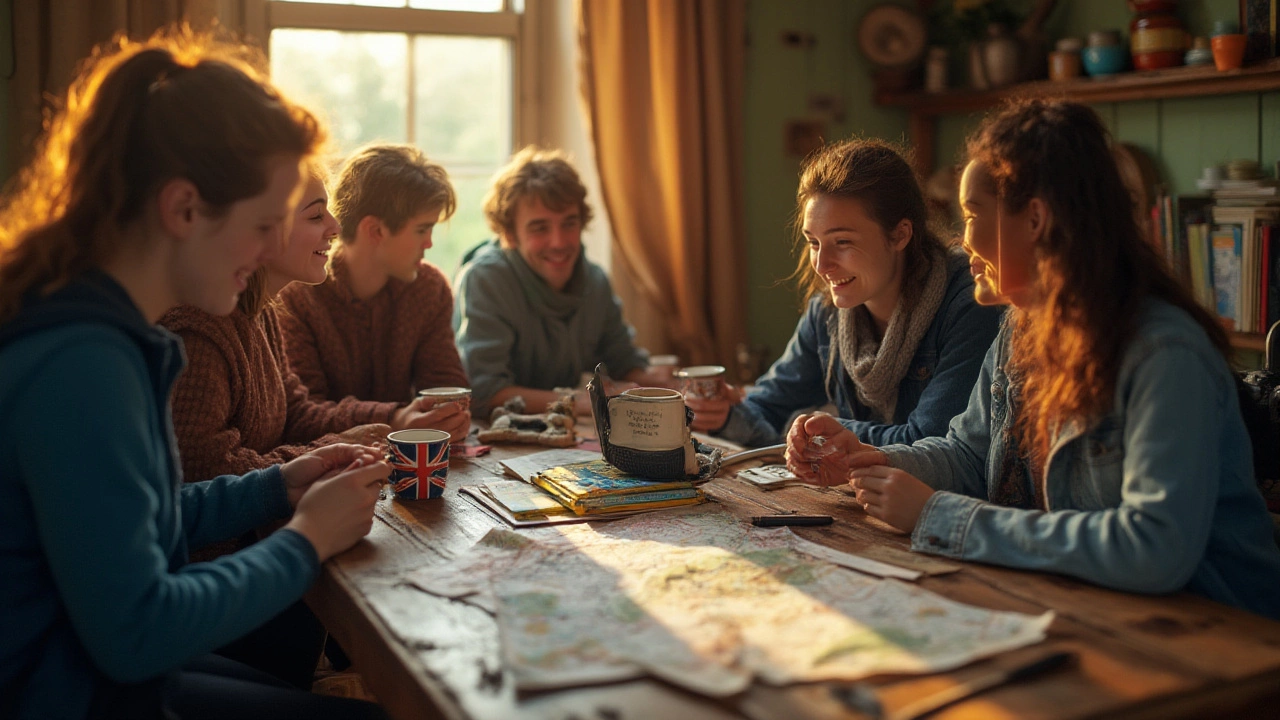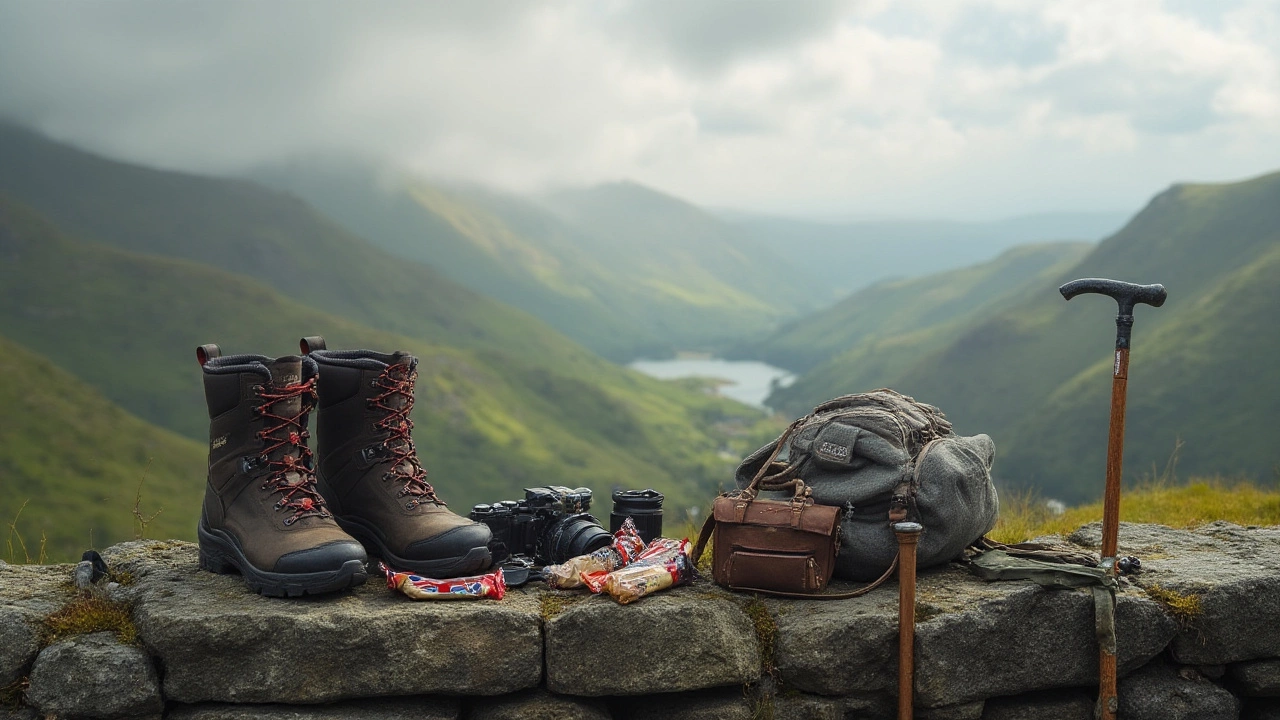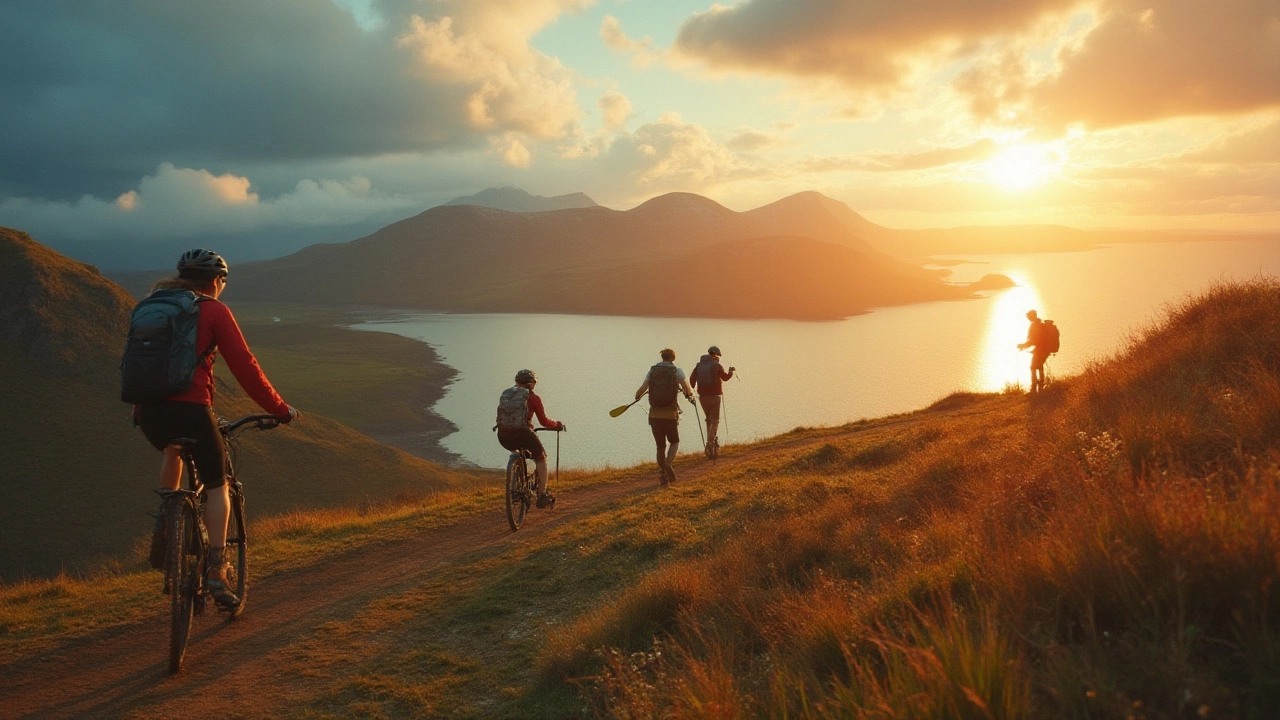Ultimate Guide to Planning an Adventure Holiday: Tips, Destinations & Gear
 Jul, 7 2025
Jul, 7 2025
Sitting at work watching someone’s paragliding video while your coffee goes cold is probably the universal signal that it’s time to plan your own adventure getaway. Packing up and leaving the same old routine for a little adrenaline isn’t just tempting—it’s possible, with the right mix of wild ideas and careful planning. The trick? Knowing how to match your bucket-list dreams with reality, without blowing your budget or losing your mind in the details.
Finding Your Why: What Drives Your Adventure?
Every legendary adventure holiday starts with a reason, not just a random pinpoint on the map. Are you after that rush you get cliff-jumping into turquoise water? Or maybe you just want to hike where glaciers meet the sky and Instagram is an afterthought. Figuring out your main “why” doesn’t only help with motivation—it actually saves you from picking adventures that sound cool but don’t fill your tank. Psychology Today ran a survey last year showing 72% of travelers who chose trips linked to their core interests felt their vacation was more satisfying than previous trips.
Start with your passion. List a few things you love, activities that make you completely lose track of time. These could be anything—rock climbing, kayaking, mountain biking, wildlife photography, or even learning traditional dances in a new country. Then, ask what kind of vibe you want: jaw-dropping challenge or low-key exploring? Solo introspection or team banter? Once that’s in place, decide if you want to go wild on your own or join a guided group. Guided tours often include local guides and safety gear, making rugged activities safer for first-timers. A company like G Adventures, for instance, has specialized trips for everything from Arctic kayaking to Andean treks, and their groups attract people with shared interests so you’re rarely the odd-one-out.
Don’t forget seasonality and weather. A trek in the Swiss Alps is epic in July, but can freeze your nose off in November. Many destinations hype their “shoulder seasons,” those not-quite-peak dates when crowds thin out and prices drop. Bali’s dry season (April to October) is golden for hiking volcanos; Patagonia bursts to life from December to March. Checking seasonal guides prevents those awkward moments standing ankle-deep in mud when you dreamed of powdery trails.
Your adventure should be more than an escape. Let it reconnect you with what excites you and nudges you ever-so-slightly out of your comfort zone. Once you’ve honed in on your motivation, you’re halfway there.
Destinations That Actually Deliver
Admit it—half the fun is picking the place. There’s no shortage of “top ten” lists, but not every spot lives up to the hype. If you want heart-stopping wonder without a thousand selfie sticks in the way, you need to dig past headline destinations. According to recent data from the Adventure Travel Trade Association, Iceland, New Zealand, and Costa Rica top the list for blending accessibility with unfiltered natural adventure. Numbers show that Iceland, with less than 400,000 residents, welcomed over 2 million adventure travelers last year. Think waterfalls, black sand beaches, and hot springs with northern lights overhead.
But let’s not overlook the underdogs. Guatemala’s volcanic treks, Slovenia’s caves and lakes, or even Mongolia’s horseback expeditions are growing fast. Pro tip: the fewer influencers tagging it, the more untouched trails you’ll find. Get inspired, but don’t hesitate to go off-script. For safaris, Botswana is crowd-free compared to the Serengeti. Want sheer vertical thrills? Kyrgyzstan’s Tian Shan mountains have peaks few non-locals have even Googled. Research doesn’t mean you need to bury yourself in 100 tabs—use adventure community forums like Lonely Planet’s Thorn Tree or Reddit’s r/AdventureTravel for real-life accounts and gut-check reviews.
If you’re stretched for time or cash, don’t rule out your own backyard. National parks and remote state reserves often offer some of the best hikes, white-water kayaking, or mountain biking. Around 63% of adventure seekers in the U.S. in 2024 did their trips within their own state because travel budgets shrank, but they still reported high ratings for fun and novelty.
When you’re picking your spot, cross-check what documentation you’ll need. Some countries make getting a tourist or adventure visa a breeze; others require months of prep. Don’t just “wing it” on border crossings, especially if you’re hauling unusual outdoor gear. Some regions regulate things like drones or hiking poles for environmental reasons.
One last thing—look at safety and insurance. Not every location has rescue teams standing by if something goes sideways. Research local emergency services, and check if your travel insurance covers high-risk activities. A quick phone call to your provider is better than getting stuck with a five-figure hospital bill for cracking your wrist in a remote jungle.

Budgeting Without Killing the Mood
Money talk isn’t glamorous, but running out of cash halfway up a mountain isn’t exactly ideal. Think of your budget as the fuel for your adventure. Start by mapping out big-ticket items—flights, accommodation, permits, and guides. A Cornell tourism report in early 2025 found that most adventure trips break out as 40% flights, 25% lodging, 20% activities, 10% food, and 5% for gear and emergencies. Use this as a rough guideline, but adjust according to your trip and lifestyle preferences.
Flexibility saves money. For flights, use fare comparison tools like Skyscanner or Google Flights, and set up price alerts. Booking mid-week or months in advance often scores you significant deals. If your adventure involves remote places, consider nearby airports with budget airlines and plan a local bus or train adventure—sometimes cheaper and with better scenery. Sometimes you can save hundreds just by flying to a smaller neighboring country and crossing the border on land.
Accommodations don’t have to be hotels. Hostels, home stays, camping cabins, or even renting gear like campervans split between friends can majorly shrink your costs. In Norway, for instance, wild camping is a right—yes, you can camp on public land for free nearly anywhere. Some mountain towns offer community-run “hiker’s huts” with kitchens for $10 a night.
On the food front, hitting local markets and corner stores beats touristy restaurants every time, both for budget and experience. Street food in Thailand or Mexico is cheap, filling, and usually comes with a side of people-watching you can’t beat in sit-down spots. In a study by Eurostat, travelers who bought groceries locally saved up to 50% on eating costs compared to those who only dined out.
Adventure permits or entrance fees can sneak up on budgets. Popular treks like Peru’s Inca Trail require advance permits that sometimes sell out a year ahead and cost a pretty penny. Research early, and look for alternative trails that don’t just save you cash but also thin out crowds. Take a few screenshots or print confirmations—you’d be surprised how remote towns lose internet at the worst times for online ticket checks.
Plan for the unexpected. Stash emergency cash. Hide a backup debit card where you’d never reach for snacks, like inside a toiletry bag. Carry at least one day’s worth of emergency rations. Seeking out “adventure insurance” can cover evacuations or lost gear, and lots of providers offer plans tailored for adventure holidays now. A little prep can mean the difference between a great story and a financial horror story.
| Expense | Europe | Asia | South America |
|---|---|---|---|
| Flights | $700 | $900 | $1000 |
| Accommodation (per week) | $350 | $200 | $250 |
| Permits/Fees | $80 | $45 | $60 |
| Guides | $200 | $100 | $150 |
| Food (per week) | $220 | $140 | $180 |
| Gear Rental | $75 | $70 | $60 |
Gearing Up: What to Pack Without Overpacking
Now for the tough love: leave the “just in case” items at home. If your bag is bursting in your bedroom, it’ll feel twice as heavy halfway up a trail. Packing light can be a game-changer. The best adventure travelers swear by “the rule of fives”—five shirts, five pairs of socks, five pairs of underwear. Mix and match, then embrace the joy of laundry days on the road. Focus on layering: a high-quality waterproof jacket, quick-dry base layers, sturdy hiking boots, and one warm hat or beanie. If you’re hitting sunny spots, lightweight UV clothing beats sunburn creams any day. Waterproof bags for electronics are worth their weight in gold if you’re facing rivers or monsoons.
Gear needs get specific. If trekking, trekking poles and a properly fitted backpack matter. For cycling, invest in padded shorts and a hydration pack. For kayaking or paddle sports, dry bags and water shoes are essentials. Always bring a backup charging method—solar chargers are tiny now and increasingly affordable. For navigation, download offline maps like Maps.me or Gaia GPS in advance. Don’t assume Wi-Fi or cell service in wild regions—the Alps, Andes, and even parts of Utah have zero signal for miles.
First aid shouldn’t be last-minute. Bear in mind that altitude sickness, heatstroke, and digestive troubles top the list of adventure mishaps. Pack a basic kit: plasters, disinfectant, painkillers, blister pads, stool softener, and antihistamines. If you’re going high or remote, consider adding a compact pulse oximeter—these aren’t just for nurses and mountaineers, and they help spot altitude issues quickly. A mini headlamp or torch can save you during late arrivals or unexpected power cuts.
Double check the electrical outlets and voltages in your destination. Carrying a universal power adapter sounds boring but can be a true lifesaver when you need to charge a phone or action camera on the go. Many travelers forget this and end up hunting local markets for the right plugs when they’d rather be out exploring.
If you’re concerned about gear security, lightweight cable locks or travel safes give peace of mind in shared hostels and public transport. Label expensive gear with email or phone contact stickers—lost and founds are more common than you’d think, and honest finders do exist. Reduce waste by ditching single-use plastics for reusable water bottles and utensils. Nothing feels as empowering as knowing you packed smart, not just heavy.

Troubleshooting Adventure: Diaries from the Road
Travel never sticks to the plan perfectly, and you’ll always collect stories of surprises—both good and bad. Sometimes it pours fifty miles from civilization, or the “mountain lodge” turns out to be an old barn with a goat for company. But these are the tales you’ll cherish years later, not the times everything ran like clockwork. So, set expectations for the hiccups and roll with new situations.
If you run into language barriers, phone translation apps bridge conversations when gestures fail. In 2024, apps like Google Translate and iTranslate rolled out offline voice packages for dozens of languages. Download them in advance. When you can’t find a trailhead, don’t shy away from asking locals. Most adventure travelers report this is how they stumbled upon secret spots or got invited to family dinners. More often than not, people are keen to help—or at least share a laugh at your map-reading skills.
Keep your documents handy but safe. Carry digital and printed copies of your passport, permits, and emergency contacts. Cloud storage like Google Drive or Dropbox offers an extra layer if you lose your bags. Two-factor authentication is crucial. Security is a big deal now since lost phones abroad can expose a lot more than texts, so lock things down before you leave.
Weather shifts are truly the wild card. Local advice trumps forecasts—talk to hostel staff, guides, and shopkeepers. If a storm rolls in, pivot your plan rather than push through. Flexibility isn’t a weakness; it’s what gets adventurers home with the best stories.
If you’re logging your story on social media, respect local guidelines and privacy. Drones, for example, may be banned or tightly restricted near heritage sites or villages. The European Commission’s rules require drone flyers to pre-register and avoid populated zones, and Peru’s Machu Picchu doesn’t allow drones at all on the premises.
Share your real-life stories online, not only the polished highlight reels. Community forums like r/AdventureTravel, TheDyrt, or Facebook groups help future travelers sidestep avoidable mistakes and inspire new plans. Eventually, you’ll give back advice and mark new paths for others. That’s how adventure travel keeps getting better every year.
Anyone can toss a few swimsuits and a passport in a duffel and call it an adventure, but planning an adventure holiday that really delivers is part art, part research, and all heart. Find what fires you up, choose your own path—literally and figuratively—and get out there. Your own wild story is waiting at the edge of your comfort zone.
